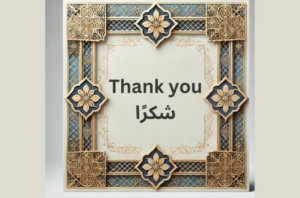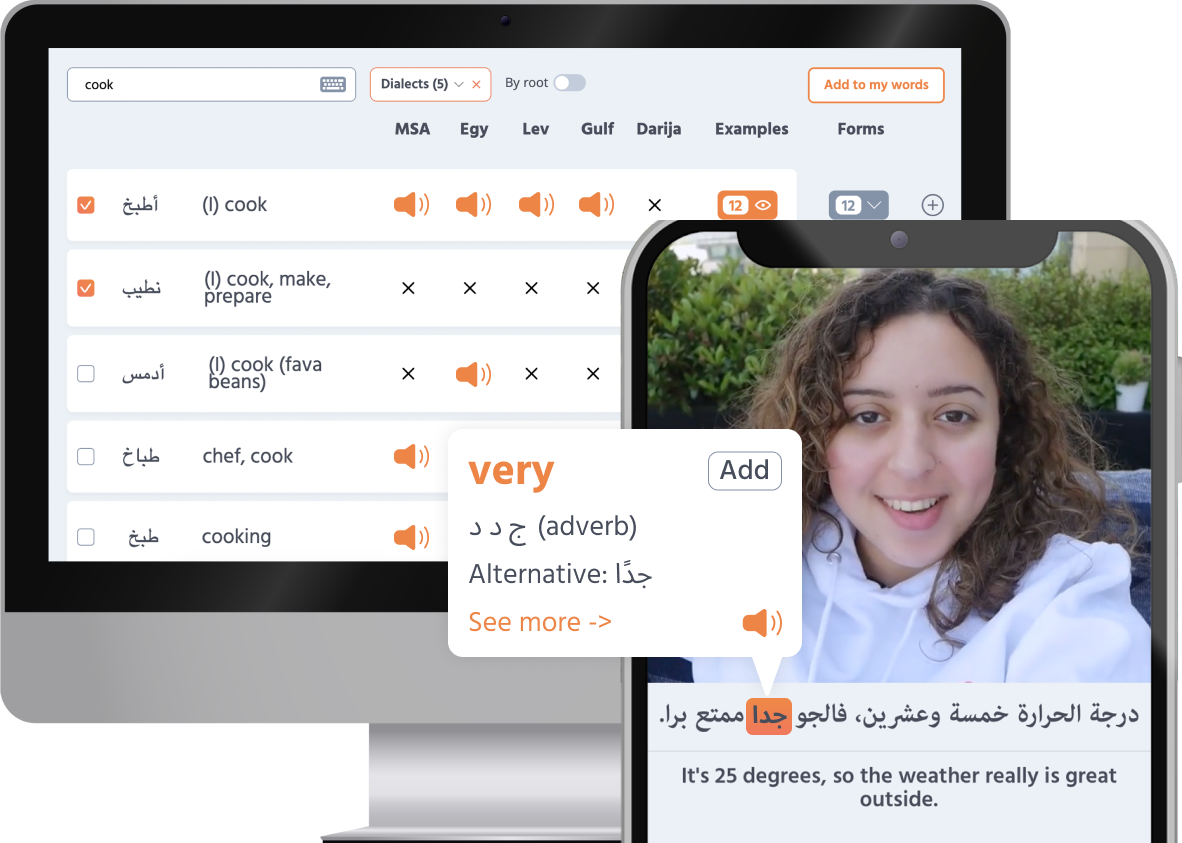Many people confuse the distinction between Arabs and Muslims and believe that they’re synonymous terms. However, there are major differences. In this blog, we’ll clarify what they are.
What’s the difference between Arabs and Muslims? Arabs are an ethnic and linguistic group . The term “Arabs” refers to a group of people mainly found in the Middle East and North Africa who share language, culture, common history , and heritage. The global population of Arabs is estimated at over 470 million people, and the biggest Arab country is Egypt, with over 111 million people.
The fact that Arabic is their native language is the main factor that brings these people together.
The term “Arabs“ is believed to originate from the ancient Arab tribe, which lived in the Arabian Peninsula in early history. From there, their language and culture spread across the region, expanding their influence and control over vast territories during different periods of history, particularly during the early Islamic period (7th – 10th century C.E.).
The map below shows the Arab world in blue (as defined by countries where Arabs are the majority population).
Muslims, on the other hand, are those who follow the religion of Islam (Muslims believe in one God, Allah, and follow teachings from the Quran, the holy book of Islam, and Prophet Muhammad), regardless of their language, ethnicity, or nationality. While there are about 470 million Arabs, there are about 1.9 billion Muslims. Of the 470 million Arabs, about 440 million of these are Muslims. So while the majority of Muslims are not Arabs, the majority of Arabs are Muslims.
The country with the largest Muslim population is Indonesia, which is non-Arab and hosts over 207 million Muslims, or 13% of the global Muslim population.
So the answer to your question ‘are Arabs and Muslims the same?’ is no, they are not the same.
Non-Muslim Arabs The majority of the population in the Arab world is Muslim, with the presence of minorities adhering to other religions such as Christianity, Yazidism, Sabianism, Baha’ism, Druze, and Judaism. Most of the Christians, Druze, and Baha’is are considered Arab; most of the Yazidis, Sabians, and Jews are not.
The number of Christian Arabs is approximately 5% of the total population of the Arab world , which equals around 16 million people.
The largest Christian denomination in the Arab world is the Coptic Orthodox Church, mainly concentrated in Egypt, with a population ranging from 7.2 to 12 million (roughly 10% of Egypt’s total population).
The second-largest denomination is the followers of the Greek Orthodox Church, with most of its followers in Syria, some in Jordan, Palestine, Lebanon, and a small minority in Iraq, totaling approximately 1 million.
The Chaldean Catholic Church followers, with an estimated population of nearly a million, mostly reside in Iraq and Syria.
The Maronite Church followers, primarily in Lebanon, number around 900,000.
The Roman Catholics are estimated at around half a million, with the majority in Lebanon and Syria.
The Syriac Orthodox community, spread across Syria, Iraq, Lebanon, Palestine, and Jordan, with a population ranging between 200,00 and 300,000.
The Coptic Catholic denomination, most of whom are in Egypt, ranging from 243,000 to 275,000, do not consider themselves Arabs but are keen on preserving their Egyptian identity.
Arab evangelical Protestants, including Lutherans and Anglicans, number around 205,000, with 130,000 in Egypt, 25,000 in Lebanon, 50,000 in Jordan and Palestine, and a few thousand in Iraq and Kuwait.
Arab Latin Catholics are present in Palestine, Israel, Syria, Jordan, Iraq, and Lebanon.
As for the Yazidis , they believe in one god and pray to him, with the sun as their direction of prayer, and in seven angels, the foremost being Tawûsê Melek. Of the approximately 1.5 million Yazidis worldwide, the majority, 550,000 , reside in Iraq, with smaller numbers in Syria. The Yazidis are ethnically Kurd, not Arab; they speak Kurdish, not Arabic.
The homeland of the Sabians is Iraq, and their current population is approximately 70,000 worldwide, with 8,000 living in Iraq.
A small unknown number of Baha’is exist in Iraq, Palestine, Jordan, and Egypt. Since Arab governments do not officially recognize them, their precise number is unknown.
There are 250,000 Druze in Lebanon, 700,000 in Syria, 150,000 in Israel, and 20,000 in Jordan. They are considered Arabs and speak Arabic.
Moreover, it is estimated that there are around 7 million atheists within the Arab population, although precise numbers are hard to come by. This lack of accurate data stems from the reluctance of individuals to openly declare their atheism, as religion plays a pivotal role in the social fabric of Arab countries, and atheism is often stigmatized or discouraged.
Challenging Arab identity: voices of dissent and diversity As discussed, being Arab typically involves speaking Arabic as a first language, residing in or descending from historically Arab regions, and participating in Arab culture, irrespective of religion.
But this identity is not universally embraced. For instance, some Lebanese claim descent from the Phoenicians, distinguishing themselves from the Arab label, while many Egyptians align with their ancient heritage, associating “Arab” specifically with Gulf nations.
Some people reject their Arab identity for reasons like politics, social factors, and history. Nationalism, historical conflicts, and colonialism’s effects may lead them to identify more with their nation than with the Arab world. They might also want to avoid stereotypes or differentiate themselves in some way. These attitudes vary based on personal experiences and the wider geopolitical situation.
Wait, what about Jewish Arabs or Arab Jews? Most Jews from Arab countries reject the “Arab” label, preferring to be called Mizrahi, a term that means (Eastern) in Hebrew and is used to describe Jews from the Middle East and North Africa. Before Israel was founded in 1948, about 800,000 Jews lived in what is now known as the Arab world, sharing the language and many aspects of the culture with their Muslim and Christian Arab neighbors. After the establishment of the State of Israel in 1948, many of these Jewish communities were either pushed out or emigrated to Israel, Europe, or the Americas due to political and social changes, but their cultural heritage still reflects their Middle Eastern and North African roots.
Challenging Muslim identity: voices of dissent and diversity Just like “Arab” isn’t always straightforward, the meaning of “Muslim” can also be complicated. Theoretically, a Muslim is a person who acknowledges Allah as the one and only God, denies divinity or lordship to anyone else, adopts Islam as a religion, follows Muhammad as a prophet and messenger, considers the Quran as a guidance book, and performs the five pillars of Islam.
But, just like people from other faiths, many are born into Muslim families, so they are often viewed as Muslims by heritage, even if they do not follow the teachings and pillars of Islam. In practice, it suffices for a person to be born to a Muslim father to be called a Muslim. If someone was not born to a Muslim father but wants to become a Muslim, he can simply say the shahādah, the Muslim profession of faith: “أشْهَدُ أنّ لا إله إلا الله أنَّ مُحمّدًا رَسُولُ الله”
(There is no god but Allah, and Muhammad is the messenger of Allah).
Therefore, when we talk about Muslims, it’s not necessarily about Islam with all its laws, customs, and worship. Not all Muslims follow Islamic teachings or anything related to Islam, such as prayer, fasting, almsgiving, and Islamic etiquette. And nevertheless, they are still considered Muslims.
Muslim or infidel? The literal meaning of the word “Muslim” in Arabic is “one who submits” or “one who surrenders.” In the Islamic context, a Muslim is someone who submits to the will of Allah, the one God, and follows the teachings of Islam. This submission involves a commitment to live in accordance with Islamic principles and laws.
Thus, although simply being born to a Muslim father or converting is enough for one to be regarded as Muslim, the literal meaning of “Muslim” introduces some complexity to this general view. Some Muslims believe that any self-declared Muslims who don’t adhere to their particular interpretation of Islamic teachings are infidels (كُفّار
) and therefore fake Muslims. Some Sunni groups may accuse Shiites of being non-Muslims due to doctrinal differences. Also, some Muslims and Islamic scholars may deny that members of ISIS and Al-Qaeda are Muslim, in order to condemn their actions more forcefully and distance them from Islam.
So, if we base the label “Muslim” on adherence to Islamic teachings, then who is considered a Muslim depends on the specific interpretation of Islam one follows.
The difference between Arabs and Muslims If you are still wondering what the difference between Arabs and Muslims is, here’s some more information.
Language Arabic is the official language in all Arab countries. It is the language used in universities, schools, books, and official media. Arabs speak dialects, which vary from one region to another, and most of them understand standard Arabic.
Muslims speak the language of the country they live in . They speak Arabic if they tend to be from Arab countries, Turkish if they are from Turkey, and Persian if they are from Iran, etc. Nevertheless, they generally use Arabic for prayer, or at least select phrases, which they may or may not understand.
Geographical location Arabs inhabit the Arab world , which is located mainly in the Middle East and North Africa. It spans from the Persian Gulf (Arabian Gulf) in the east to the Atlantic Ocean in the west and from the Mediterranean Sea in the north to the Horn of Africa and the Indian Ocean in the south (see the map above).
Considering that Islam is a religion that anyone can embrace, Muslims are distributed across almost every corner of the globe. Their presence is not limited to Arab or even Islamic countries.
Most Muslims reside in Southeast and South Asia (43.9% of the world’s Muslim population), Middle East-North Africa (27.1%), and Sub-Saharan Africa (15.7%).
Here is a list of countries with the largest Muslim populations in the world as of 2022. Arab countries are in bold.
Indonesia (241.52M)
Pakistan (255.62M)
India (211.16M)
Bangladesh (155.38M)
Nigeria (111.75M)
Egypt (104.73M) Iran (87.43M)
Turkey (83.23M)
Ethiopia (46.5M)
Iraq (44.05M) Algeria (43.8M) Sudan (42.88M) Afghanistan (40.72M)
Morocco (37.08M) Uzbekistan (34.29M)
Saudi Arabia (34.17M) Yemen (33.36M) Niger (25.95M)
China (25.82M)
Tanzania (25.54M)
Malaysia (22.29M)
Mali (21.45M)
Syria (20.41M) Senegal (16.59M)
Russia (14.49M)
Notice how the largest ones are not Arab!
The relationship between Arabic and Islam As we’ve explained, not all Arabs are Muslims, even though most Arabs are. At the same time, many Muslims come from non-Arab backgrounds, and many Islamic countries aren’t Arab.
But Islam is closely tied to the Arabic language because the Quran, which is the holy book for Muslims, is written in Arabic. Also, the other major source of Islamic teachings, the sayings (ahadeeth أحَادِيث
) of Prophet Muhammad, are transmitted in Arabic because he was an Arab. Because of this, some people believe that certain Islamic practices, like prayers (Muslims are supposed to pray five times a day), are supposed to be done in Arabic.
Here are some Arabic-Islamic terms in Standard Arabic:
الحَمْدُ لِله
(Alhamdulillah): Thank God; Muslims say this when asked about their well-being, and often conclude discussions, whether positive or negative, by saying “الحَمْدُ لِله”. They also say it after finishing a meal. Some non-Muslim Arabs also say this.
بِسْمِ الله الرَّحْمَن الرَّحِيْم
(Bismillah al-Rahman al-Rahim): In the name of God, Most Gracious, Most Merciful; some Muslims may say this phrase before reading the Quran or starting any action, such as eating, entering a house, or anything else.
بارَكَ اللهُ فيك
(Baarakallaahu feek): May God bless you! This phrase is synonymous with “thank you” among Muslims.
جَزَاكَ اللهُ خيْرًا
(Jazaak-Allaahu khayran): May God reward you well! Similarly, this phrase is used to express gratitude and appreciation.
إنْ شَاءَ الله
(Inshaa’Allah): If God wills; Muslims say this phrase at the end of discussing any future action, whether near or distant. At times, people might say “Inshaa’Allah” to politely avoid committing to something they don’t actually intend to do. They may feel too shy to directly decline or confirm, so they use this phrase instead. Typically, their tone or demeanor suggests that the task won’t be completed.
رمَضَان مُبَارَك
(Ramadan Mubarak): Wish you a blessed Ramadan; a phrase used by Muslims to congratulate others on Ramadan.
عِيْد مُبَارَك
(Eid Mubarak): Blessed festival! This phrase is used to congratulate others on the Eid holidays, Eid al-Fitr and Eid al-Adha.
السَّلَامُ عَلَيْكُم وَرَحْمَةُ اللهِ وَبَرَكاتُه
(Assalaamu Alaikum wa Rahmatullaahi wa Barakaatuh): Peace, God’s mercy, and blessings be upon you; Muslims say this to greet others.
وَعَلَيْكُم السّلامُ وَرَحْمَةُ اللهِ وبَرَكاتُه
(Wa Alaikum Assalaam wa Rahmatullaahi wa Barakaatuh): This is the response to the greeting “Assalaamu Alaikum wa Rahmatullaahi wa Barakaatuh” above.
جُمْعَة مُبَارَكَة
(Jumu’ah Mubarakah): Wish you a blessed Friday; used to congratulate others on the blessed day of Friday, which holds religious significance for Muslims.
Do you need to learn Arabic to be Muslim? There’s a strong connection between Arabic, especially Classical Arabic, and Islam. Therefore, it’s often considered important to know some Classical Arabic, like Quranic verses and specific phrases said during prayers, but it is not a requirement to learn Arabic to be a Muslim.
Classical Arabic is very close to Modern Standard Arabic but differs slightly, and both differ from local Arabic dialects . Each dialect, in turn, varies from other dialects. But all varieties of Arabic overlap significantly in terms of vocabulary and grammar.
Oh, and by the way… If learning Arabic at your own pace, with fun, real-world videos sounds like your style, then Playaling could be exactly what you’re looking for!
With Playaling, you’ll dive into any major Arabic dialect or MSA. Our diverse range of videos has it all—from everyday conversations and cultural moments to music videos, TV and movie clips, influencer content, news broadcasts, and inspiring talks.
Our interactive captions let you tap any word for instant translations, context, and audio. So, real Arabic content becomes accessible with just a click. Miss something? No problem—rewind and listen as often as you need, or hover over subtitles for quick definitions.
Spot a word you want to learn? Save it to your personalized word set, or dive into curated sets for focused practice and easy review.
Interactive exercises let you dive in and practice what you’ve learned.
Need to look something up? The Audio Dictionary has you covered with clear human pronunciations and real world examples.
It’s a learning experience that keeps you engaged, bringing authentic, real-world Arabic closer to you every step of the way.
Give it a try!









